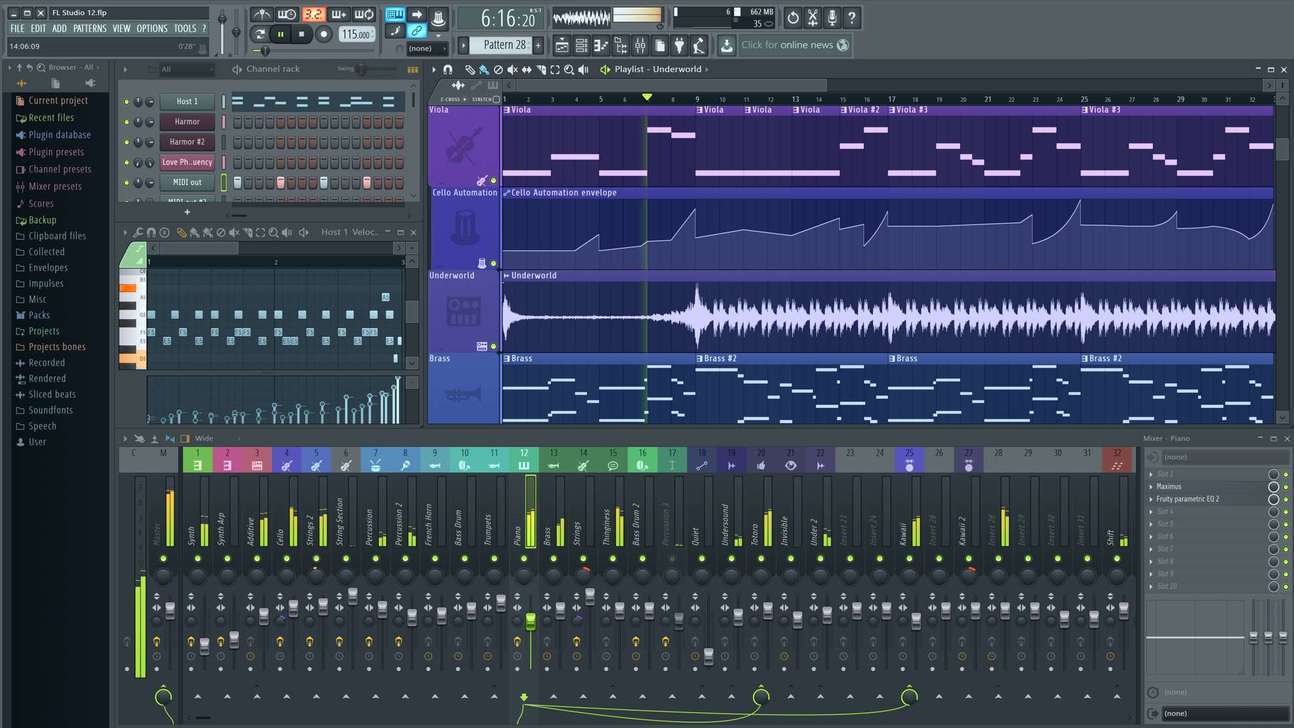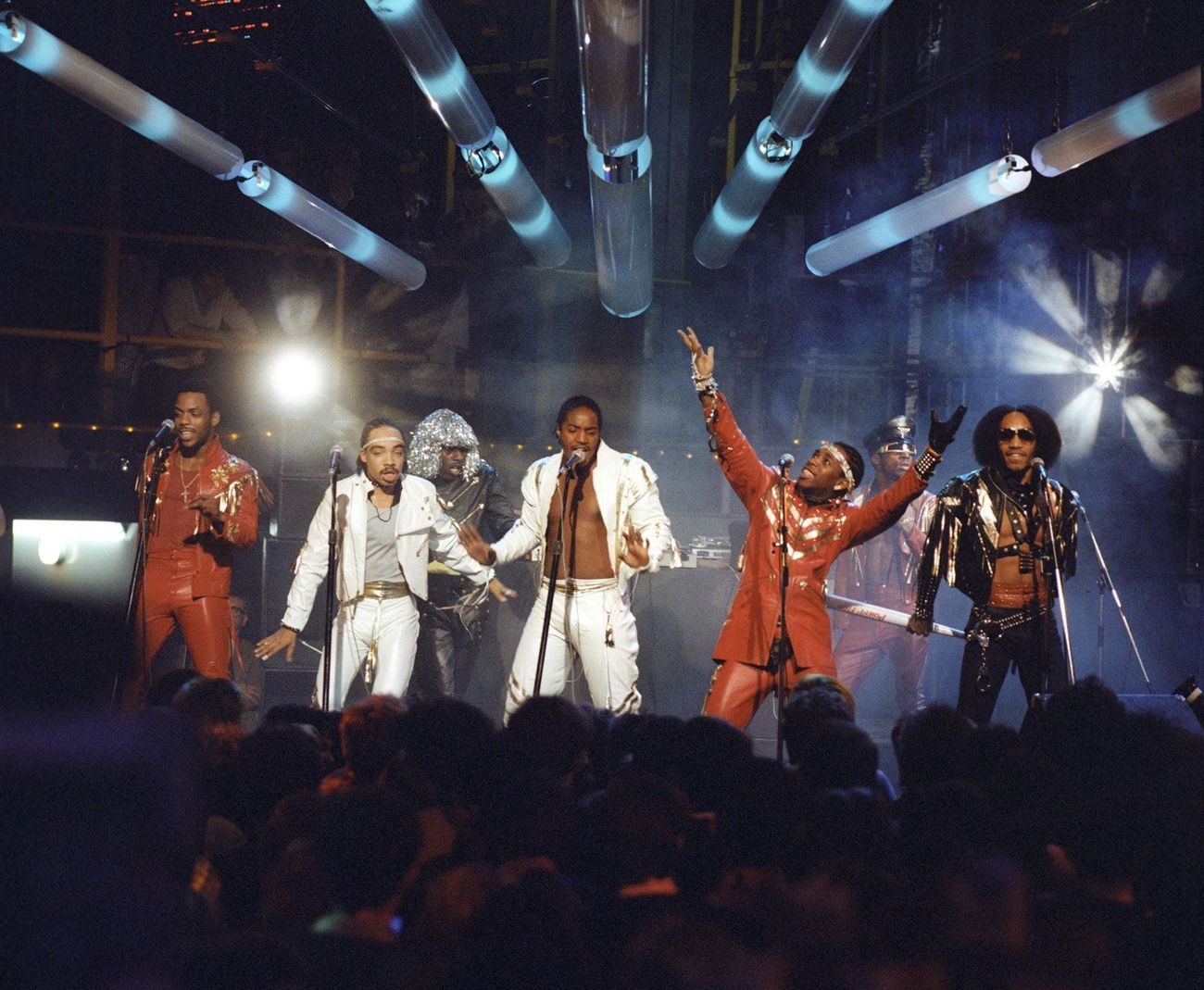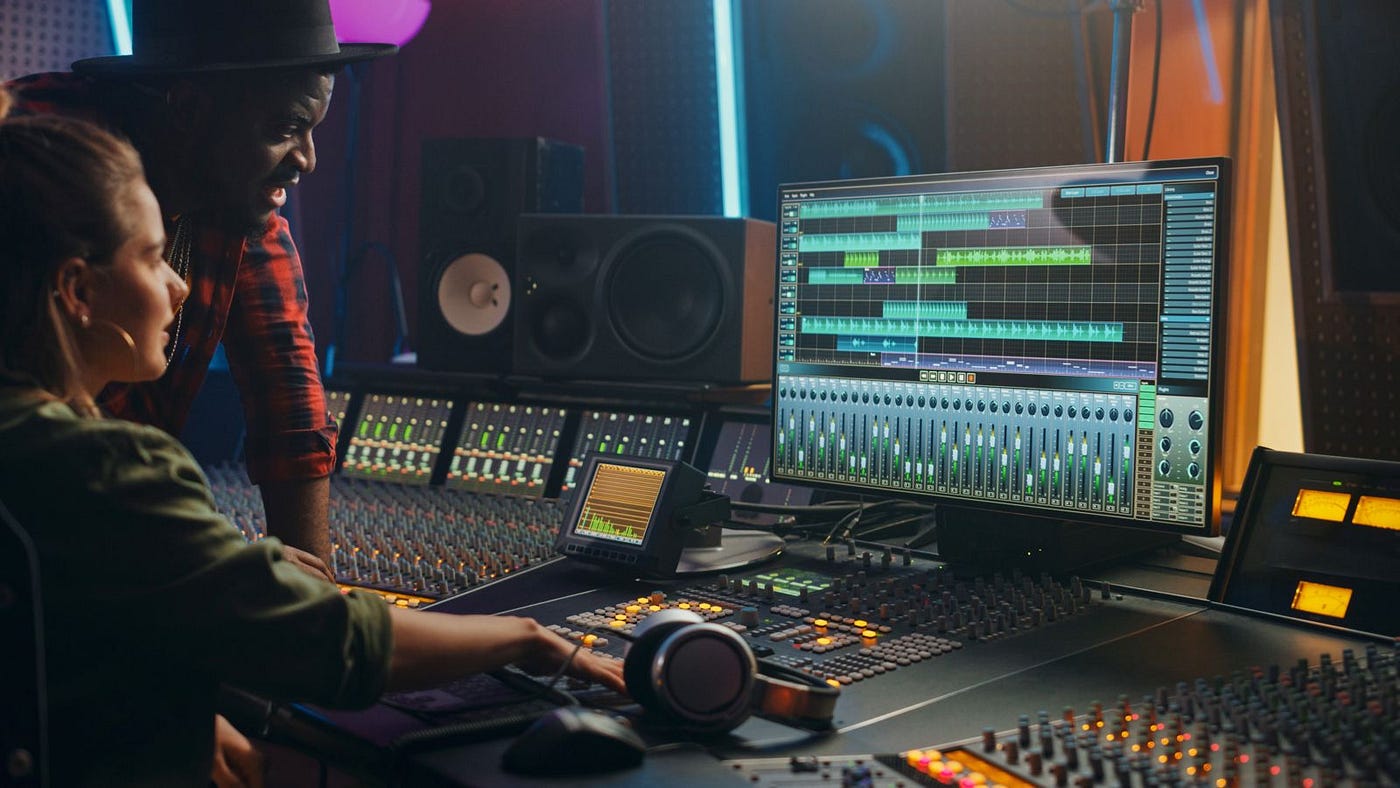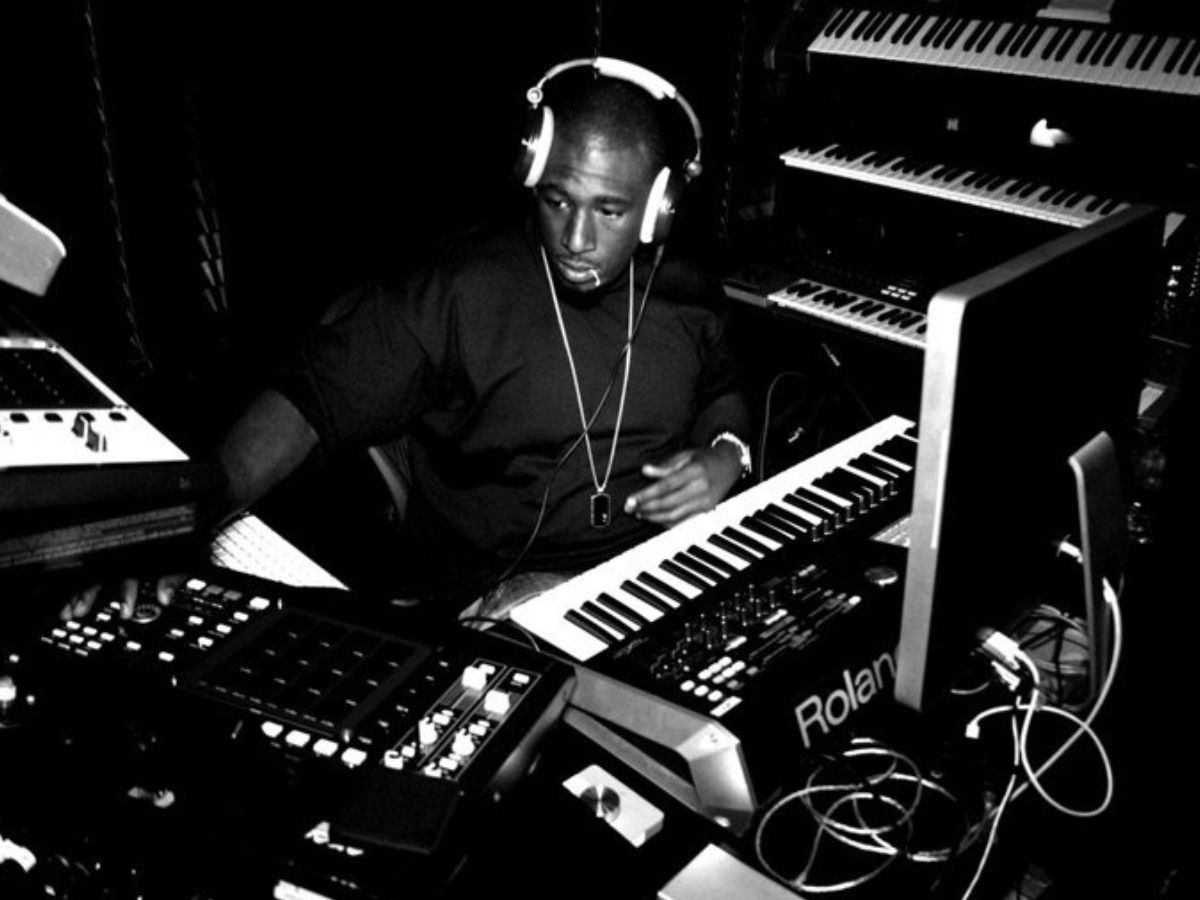

Hip Hop
How To Make Hip Hop Music
Modified: January 22, 2024
Learn the step-by-step process of making captivating #HipHop music and master the art of creating beats, writing lyrics, and producing high-quality tracks.
(Many of the links in this article redirect to a specific reviewed product. Your purchase of these products through affiliate links helps to generate commission for AudioLover.com, at no extra cost. Learn more)
Table of Contents
Introduction
Welcome to the exciting world of Hip Hop music! Hip Hop is a genre that has evolved over the years, shaping the music industry and capturing the hearts of millions around the world. Whether you’re an aspiring artist or a music enthusiast looking to understand the intricacies of creating Hip Hop music, you’ve come to the right place.
In this article, we will delve into the various elements that make up a phenomenal Hip Hop track. From picking the right beats to crafting engaging lyrics and perfecting the art of mixing and mastering, we’ll guide you through the creative process step by step.
Hip Hop music is known for its unique blend of rhythmic beats, catchy melodies, and thought-provoking lyrics. It has the power to convey powerful messages, tell personal stories, and bring people from different backgrounds together.
Whether you want to express your emotions, share your experiences, or simply entertain, Hip Hop provides a platform for self-expression like no other genre. It allows artists to explore their creativity and connect with listeners on a deeper level.
But creating a great Hip Hop track requires more than just talent. It requires knowledge, practice, and a keen understanding of the genre’s history and influences. From the early days of pioneers like Grandmaster Flash and Run-DMC to the modern era of artists like Kendrick Lamar and J. Cole, Hip Hop has continuously evolved and pushed boundaries.
In this article, we’ll explore the key elements that contribute to the creation of a memorable Hip Hop track. We’ll discuss how to pick the right beats to complement your style, create catchy melodies that stick in the listener’s mind, write engaging lyrics that tell your story, and utilize mixing and mastering techniques to make your music sound polished and professional.
So buckle up and get ready to dive into the world of Hip Hop music creation. Whether you’re a beginner looking to learn the basics or a seasoned artist seeking to refine your skills, this article will serve as your comprehensive guide to making remarkable Hip Hop music.
Picking the Right Beats
When it comes to creating a captivating Hip Hop track, choosing the right beats is essential. The beat sets the foundation for your song and provides the groove and rhythm that will drive the listener’s experience.
There are a few key factors to consider when selecting beats for your Hip Hop music:
- Style: Determine the overall style or vibe you want to convey in your song. Whether it’s a laid-back boom bap beat, an energetic trap instrumental, or a jazzy sample-based track, the style of the beat should align with the mood and message of your lyrics.
- Tempo: Consider the tempo or speed of the beat. Different tempos evoke different emotions and suit different lyrical flows. Experiment with different tempos to find the one that best complements your lyrics and delivery.
- Instrumentation: Pay attention to the instrumentation used in the beat. Hip Hop beats often incorporate a variety of melodic and percussive elements such as drums, bass, synths, and samples. Make sure the instrumentation aligns with your artistic vision and enhances the overall sound of the song.
- Originality: While it can be tempting to choose beats that are popular or trending, it’s important to also consider originality. Look for beats that have a unique twist or incorporate unconventional sounds to make your music stand out from the crowd.
There are several ways to find beats for your Hip Hop music:
- Producers: Work with talented producers who specialize in creating Hip Hop beats. Collaborating with a producer can provide you with custom-made beats that suit your style and vision.
- Online platforms: Explore online platforms that offer a wide range of beats for purchase or lease. These platforms allow you to browse through different styles and genres, making it easier to find the perfect beat for your song.
- Sample-based beats: Dive into the world of sample-based beats, where producers create beats by sampling snippets of existing songs or records. This approach can yield unique and nostalgic sounds that add depth and character to your music.
Remember, the beat you choose will shape the overall sound of your Hip Hop track. Take the time to explore different options, experiment with different styles and tempos, and find the beat that resonates with your artistic vision. Picking the right beats is the first step in creating a remarkable Hip Hop music experience.
Creating Catchy Melodies
One of the key elements that makes a Hip Hop track memorable is a catchy melody. The melody is the melodic line or hook that grabs the listener’s attention and sticks in their mind long after the song is over. It acts as the main musical theme of the song and can be instrumental or vocal-based.
Here are some tips for creating catchy melodies for your Hip Hop music:
- Experiment with different scales and chords: Start by exploring different scales and chords to find the right harmonic foundation for your melody. Major scales often evoke happier and brighter emotions, while minor scales tend to create a more melancholic or introspective mood. Experiment with different chord progressions to find the one that resonates with the emotional tone of your lyrics.
- Simplicity is key: Keep your melodies simple and easy to remember. Avoid overly complex or intricate melodies that might confuse or overwhelm the listener. Focus on creating a strong and memorable melodic line that can be easily sung or hummed.
- Utilize repetition: Repetition is a powerful tool in creating catchy melodies. Repeat certain phrases or motifs throughout the song to reinforce the melodic hook and make it more memorable. This allows the listener to latch onto a familiar musical element and connect with your music on a deeper level.
- Add variation: While repetition is important, it’s also essential to add variation to keep the melody engaging. Introduce subtle changes or embellishments in different sections of the song to maintain the listener’s interest. This could be in the form of different rhythmic patterns, note variations, or melodic flourishes.
- Draw inspiration from other genres: Don’t limit yourself to just Hip Hop music when creating melodies. Explore other genres such as R&B, jazz, funk, or soul for inspiration. These genres often have rich melodic elements that can be adapted to fit into your Hip Hop tracks.
Remember, the melody is the hook that captures the listener’s attention and leaves a lasting impression. Spend time crafting a melody that resonates with your lyrics, enhances the overall mood of the song, and leaves a memorable mark on the listener.
Writing Engaging Lyrics
When it comes to Hip Hop music, lyrics play a crucial role in conveying messages, telling stories, and connecting with listeners on a deep level. Writing engaging lyrics is an art form that requires creativity, storytelling skills, and a strong understanding of the genre’s history and culture.
Here are some tips to help you write engaging lyrics for your Hip Hop tracks:
- Find your unique voice: Discover your own unique voice and perspective as an artist. What stories do you want to tell? What message do you want to convey? This will help you establish your own identity and connect with your audience on a personal level.
- Be authentic and genuine: Authenticity is key in Hip Hop. Write lyrics that reflect your true self and experiences. Be honest, vulnerable, and unapologetic in your storytelling. Your authenticity will resonate with listeners and make your lyrics more relatable.
- Use imagery and storytelling: Paint vivid pictures with your lyrics by incorporating imagery and storytelling techniques. This allows the listener to visualize your words and immerse themselves in your narrative. Engage the listener’s senses by describing scenes, emotions, and experiences in a compelling way.
- Experiment with different rhyme schemes: Hip Hop is known for its intricate rhyme schemes and wordplay. Explore different rhyme schemes, such as internal rhymes, multi-syllabic rhymes, and offbeat rhymes, to add complexity and depth to your lyrics. Play with words and syllables to create rhythmic patterns and to enhance the flow of your delivery.
- Balance substance and style: While it’s important to showcase your lyrical skills, make sure your lyrics have substance and meaning. Avoid sacrificing substance for the sake of showcasing technical prowess. Find a balance between clever wordplay and delivering a powerful message.
- Stay aware of current events and social issues: Hip Hop has always been a platform for addressing social issues and speaking out against injustice. Stay aware of current events and use your lyrics to shed light on important topics. Use your voice to inspire change and bring awareness to relevant issues.
Remember, writing engaging lyrics is a continuous process of improvement. Practice regularly, continually refine your skills, and study lyrics from influential Hip Hop artists. The more you write and explore different styles and techniques, the better you’ll become at crafting lyrics that resonate with your audience.
Crafting Dynamic Rhythms
Rhythm is at the heart of Hip Hop music. Crafting dynamic rhythms not only sets the groove and energy of a track but also enhances the overall impact of the song. From the drum patterns to the use of syncopation, rhythm is a vital element that keeps the listener engaged and moving to the beat.
Here are some tips for crafting dynamic rhythms in your Hip Hop tracks:
- Experiment with drum patterns: The drum patterns form the backbone of the rhythm in Hip Hop. Explore different drum sounds and patterns to find the right combination that complements your style and enhances the overall vibe of the track. Don’t be afraid to experiment with unconventional drum patterns to bring a unique flavor to your music.
- Utilize syncopation: Syncopation involves emphasizing off-beat rhythms and accents. It adds a sense of rhythmic complexity and groove to your music. Experiment with placing snare hits, hi-hats, or other percussive elements off the beat to create interesting and dynamic rhythms.
- Add variations and fills: Don’t let your drum patterns remain static throughout the track. Introduce variations and fills to keep the rhythm engaging and evolving. This could involve changing the pattern during a chorus or adding drum fills to transition between sections of the song.
- Layer percussion elements: In addition to the drums, consider adding other percussion elements like shakers, tambourines, or claps to enhance the rhythm. These additional layers can add texture and depth to your music, creating a more dynamic and captivating sound.
- Pay attention to the groove: The groove is the overall feel and swing of the rhythm. Experiment with different groove settings to find the right balance that makes your music feel natural and infectious. Listen to Hip Hop tracks that you admire and analyze their groove to understand how it contributes to the overall rhythm.
- Collaborate with live musicians: If possible, collaborate with live musicians to add an organic and unique touch to your rhythms. Working with a drummer, percussionist, or guitarist can bring a new level of creativity and liveliness to your Hip Hop tracks.
Remember, crafting dynamic rhythms is an important aspect of creating captivating Hip Hop music. Experiment with different drum patterns, explore syncopation, add variations and fills, and pay careful attention to the groove. Let your rhythm become the driving force that immerses your audience and keeps them moving to the beat.
Mixing and Mastering Techniques
Mixing and mastering are crucial steps in the music production process that ensure your Hip Hop tracks sound polished, professional, and well-balanced. These techniques involve adjusting the levels, panning, EQ, compression, and adding effects to create a cohesive and impactful final product.
Here are some important techniques to consider during the mixing and mastering process:
- Setting levels and creating balance: Achieve a proper balance between different elements of your track, such as vocals, drums, bass, and instruments. Make sure no element overpowers or gets lost in the mix. Pay attention to individual track levels as well as the overall mix.
- Equalization (EQ): Use EQ to shape the frequency response of each instrument and vocal track. Cut or boost specific frequencies to enhance clarity, remove muddiness, and create separation between the different elements. Pay attention to the low end to ensure a clean and punchy bass.
- Compression: Apply compression to control the dynamic range of your tracks. This helps even out levels and adds sustain to instruments and vocals. Use compression subtly to maintain the natural dynamics of the music while controlling peaks.
- Spatial effects: Use reverb and delay to add depth and create a sense of space in your mix. Experiment with different settings to place elements in various positions within the stereo field. Pan instruments to different positions to create width and separation.
- Mix referencing: Compare your mix to professionally mixed and mastered tracks in the same genre. This allows you to evaluate the overall sound and make adjustments to achieve a commercially competitive mix. Pay attention to the balance, EQ, and overall clarity.
- Mastering: Once the mix is complete, the mastering stage adds the final polish to your track. This involves enhancing the overall volume, stereo width, and ensuring consistency across multiple tracks in an album. Consider partnering with a professional mastering engineer to achieve optimal results.
It’s important to remember that mixing and mastering are skills that develop over time through experience and practice. Take the time to learn and experiment with different techniques, and listen critically to your mixes on various playback systems to ensure they translate well to different environments.
Successful mixing and mastering techniques can greatly enhance the impact and quality of your Hip Hop music, allowing your tracks to stand out and compete in today’s music industry.
Adding Vocal Effects
Vocal effects can elevate your Hip Hop tracks and add a unique touch to your vocal performance. They can enhance the energy, create depth, and bring a professional sheen to your vocals. Here are some common vocal effects used in Hip Hop music:
- Auto-Tune: Auto-Tune is a pitch correction effect that can be used subtly for pitch correction or as an artistic effect for a robotic sound. It helps to ensure that vocals are in tune and can add a modern aesthetic to your vocals.
- Doubling: Doubling your vocals involves recording the same vocal performance twice and panning each recording to create a wider and fuller sound. This technique adds depth and makes your vocals feel larger than life.
- Ad-libs: Ad-libs are spontaneous vocal phrases or sounds that complement your main vocal performance. They can be used to add emphasis, fill empty spaces, or provide additional dynamics to your tracks.
- Delay: Using delay effects can create a sense of space and dimension in your vocals. Experiment with different delay settings to add depth and a reflective quality to your performances.
- Reverb: Reverb is commonly used to add a sense of space and depth to vocals. It can range from subtle and natural to a more pronounced and atmospheric effect. Use reverb settings that complement the mood and vibe of your track.
- Filtering: Filtering effects, such as high-pass and low-pass filters, can be used to shape and manipulate the frequency response of your vocals. This can help create transitions, add interest, and remove unwanted frequencies.
- Reverse effects: Reverse effects involve reversing a vocal recording and using it as a creative effect. This technique can add an interesting and unexpected element to your tracks, creating a sense of surprise and intrigue.
When using vocal effects, it’s important to strike a balance and use them tastefully to enhance your vocals without overpowering them. The goal is to complement your performance and bring out the best aspects of your voice.
Experiment with different vocal effects, but also listen critically to ensure that they serve the overall vision and message of your song. Vocal effects should enhance and support the emotional impact of your lyrics, rather than becoming a distraction.
Remember, adding vocal effects requires creativity and experimentation. Find the effects that best suit your style and enhance your vocal performance, making your Hip Hop tracks truly shine.
Arranging the Song
The arrangement of a Hip Hop song is a critical element that determines its flow, structure, and overall impact. Effective arrangement ensures that the various sections of the song come together seamlessly, creating a cohesive and engaging musical experience for the listener. Here are some key considerations when arranging your Hip Hop tracks:
- Intro: The intro sets the stage for your song and grabs the listener’s attention. It should be captivating and give a taste of what’s to come.
- Verse: The verse is where the story unfolds. It is where the lyrics and vocals take center stage. Consider variations within verses to keep the listener engaged, such as changing the flow or adding ad-libs.
- Chorus/Hook: The chorus or hook is the most memorable and catchy part of the song. It serves as the anchor and should be easily recognizable. Make sure it stands out by using a strong melodic line and impactful lyrics.
- Bridge: The bridge provides a contrast to the rest of the song and adds a unique twist. It can be used to introduce new melodies, lyrics, or instrumental elements. It serves as a refreshing interlude before returning to the familiar elements of the song.
- Breakdown: The breakdown is a section designed to bring variation and dynamics. It often includes a stripped-down instrumentation, highlighting specific elements or creating tension before building back up to a powerful climax.
- Outro: The outro concludes the song and brings it to a satisfying end. It can be a fade-out, a repeated phrase, or a unique arrangement that leaves a lasting impression.
When arranging your Hip Hop tracks, it’s important to consider the overall flow and progression of the song. Experiment with dynamics, transitions, and variations to maintain interest throughout. Remember to leave enough space in the arrangement to highlight the vocals and lyrics, as they are crucial elements in Hip Hop music.
Additionally, pay attention to the instrumentation and production elements. Layer different instruments and sounds strategically to create depth and texture. Consider the use of breakdowns, instrumental solos, or sample-based interludes to add variation to the arrangement.
Arranging a song is a creative process, and there are no set rules. Trust your instincts, listen critically, and make adjustments as needed. The goal is to create an arrangement that captures the essence of your Hip Hop track and keeps the listener engaged from start to finish.
Enhancing with Samples and Sound Effects
Samples and sound effects play a significant role in Hip Hop music, adding depth, texture, and character to your tracks. They can help you create unique sonic landscapes and give your music a distinct flavor. Here are some tips for effectively enhancing your Hip Hop tracks with samples and sound effects:
- Sampling: Sampling involves taking snippets of existing songs or records and incorporating them into your own music. Look for samples that inspire you and fit the mood and theme of your track. Experiment with chopping, looping, and manipulating samples to create new and unique sounds.
- Sound libraries and virtual instruments: Explore sound libraries and virtual instruments to find unique and high-quality sounds to enhance your production. From synth textures and atmospheric pads to drum kits and percussion samples, there are a plethora of options available to add depth and richness to your music.
- Sound effects: Sound effects can be used strategically to enhance certain moments in your track. Whether it’s a vinyl crackle, a gunshot, or a record scratch, sound effects can add realism, atmosphere, and emphasis to specific sections of your song.
- Vocal samples and chops: Incorporating vocal samples or chops from other songs or recordings can add personality and flair to your tracks. These samples can be used as hooks, textures, or rhythmic elements, adding an extra layer of creativity to your music.
- Foley sounds: Foley sounds are real-world sounds recorded specifically for use in music and film production. They can be used to create unique percussive elements, add atmosphere, or provide a sense of authenticity to your production. Experiment with capturing everyday sounds and utilizing them creatively in your tracks.
- Layering and blending: Don’t be afraid to experiment with layering different samples and sound effects to create intricate and complex textures. Use EQ, panning, and effects to blend them seamlessly into your mix, ensuring they don’t overpower the other elements of your track.
When using samples and sound effects in your Hip Hop tracks, it’s essential to respect copyrights and licensing. Ensure you have the necessary permissions or use royalty-free samples to avoid any legal issues.
Remember, samples and sound effects can add a unique and creative touch to your Hip Hop tracks. Don’t be afraid to experiment, think outside the box, and infuse your music with your own artistic vision to create compositions that truly stand out.
Finalizing and Releasing Your Hip Hop Music
After putting in all the hard work into creating your Hip Hop music, it’s time to finalize and release your tracks to the world. This final stage is crucial in ensuring that your music is shared with the right audience and reaches its full potential. Here are some steps to consider when finalizing and releasing your Hip Hop music:
- Mix and master your tracks: Once you are satisfied with the composition, arrangement, and production of your music, it’s important to give your tracks a final mix and master. This step ensures that your songs sound polished, balanced, and ready for consumption across different platforms and playback systems.
- Artwork and packaging: Invest time and effort into creating eye-catching and professional artwork for your album or single release. The visual aspect of your music plays a significant role in attracting potential listeners and making a lasting impression.
- Choose a distribution platform: There are numerous distribution platforms available that can help you get your music out to streaming services, online stores, and social media platforms. Research and choose a platform that aligns with your goals and offers the best reach and visibility for your music.
- Promote your music: Develop a marketing strategy to promote your Hip Hop music. Utilize social media, music blogs, playlists, and collaborations with other artists to increase your exposure. Engage with your audience, share behind-the-scenes content, and create anticipation for your release.
- Engage with your fans: Building a loyal fanbase is crucial in the music industry. Interact with your audience through social media, live performances, and online communities. Respond to comments and messages, show appreciation, and keep them updated on your journey as an artist.
- Perform live: Showcase your talent and connect with your fans by performing live. Look for opportunities to perform at local venues, open mics, or collaborate with other artists for live shows. Live performances not only promote your music but also help you improve as a performer.
- Collect and analyze feedback: Pay attention to feedback from listeners, fellow musicians, and industry professionals. Use constructive criticism to improve your craft and understand the preferences and tastes of your target audience. Continually adapt and evolve your music based on the feedback you receive.
- Stay consistent and motivated: Consistency is key in the music industry. Keep creating, releasing, and promoting music to maintain momentum and build your career as a Hip Hop artist. Stay motivated, surround yourself with a supportive network, and never lose sight of your passion and artistic vision.
Remember, the finalizing and releasing stage is just the beginning of your journey as a Hip Hop artist. It requires dedication, perseverance, and continuous improvement. Embrace the process, learn from every release, and keep pushing your boundaries to make your mark in the Hip Hop music scene.











